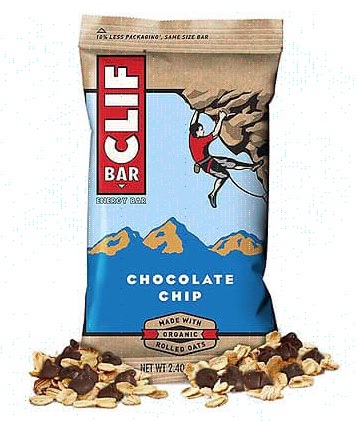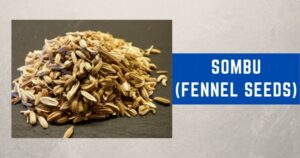Glycemic Index of Clif Bar
What is the GI Index of Clif Bar?
- Glycemic Index (GI) of Clif Bar is 78

Clif Bar
Clif Bar is a popular energy bar that is often consumed as a convenient and nutritious snack or meal replacement option. The glycemic index (GI) of Clif Bar refers to how quickly it raises blood sugar levels after consumption. In this article, we will explore the glycemic index of Clif Bar and its implications for blood sugar management.
Understanding Clif Bar and its Composition
Clif Bar is a combination of carbohydrates, proteins, fats, and various other ingredients designed to provide sustained energy. It typically contains a blend of rolled oats, dried fruits, nuts, and seeds. The specific ingredients may vary depending on the flavor of the bar. These ingredients contribute to the taste, texture, and nutritional profile of Clif Bar.
Glycemic Index and its Relevance
The glycemic index is a scale that ranks carbohydrate-containing foods based on how quickly they raise blood sugar levels compared to a reference food, usually glucose or white bread. Foods with a high glycemic index (above 70) are rapidly digested and cause a quick increase in blood sugar levels. Foods with a low glycemic index (below 55) are digested more slowly, resulting in a more gradual release of glucose into the bloodstream.
Determining the Glycemic Index of Clif Bar
The glycemic index of Clif Bar can vary depending on the specific ingredients and their proportions in the bar. Since Clif Bar is a combination of carbohydrates, proteins, and fats, it may have a different glycemic index compared to food that contains only carbohydrates. The average Glycemic Index of Clif Bar is 78. To determine the glycemic index of Clif Bar, it would require conducting specific laboratory tests to measure its impact on blood sugar levels in comparison to a reference food.
Factors Influencing the Glycemic Index of Clif Bar
Several factors can influence the glycemic index of Clif Bar. The types of carbohydrates used in the bar, the presence of fiber, fat, and protein, as well as the processing methods, can all affect how the body digests and absorbs the carbohydrates. For example, the presence of fiber, protein, and fat can slow down the digestion and absorption of carbohydrates, resulting in a lower glycemic index.
Practical Considerations for Blood Sugar Management
While the specific glycemic index of Clif Bar may not be available, there are practical considerations for individuals looking to manage their blood sugar levels. First, it is important to read the nutrition label and ingredients list of Clif Bar to understand the carbohydrate content and the presence of other macronutrients. This information can help individuals make informed choices based on their specific dietary needs and blood sugar management goals.
Individual Variability and Glycemic Response
It is important to note that the glycemic response to any food can vary among individuals due to factors such as genetics, metabolism, and overall diet composition. Some individuals may have a more pronounced blood sugar response to certain foods, while others may have a more stable response. It is recommended to monitor blood sugar levels and consult with a healthcare professional or registered dietitian to personalize dietary recommendations.
Balanced Eating and Blood Sugar Management
Blood sugar management is not solely reliant on the glycemic index of individual foods. It is important to consider the overall balance of the diet, including portion sizes, meal timing, and the combination of different food groups. Incorporating a variety of whole foods, such as fruits, vegetables, whole grains, lean proteins, and healthy fats, can contribute to stable blood sugar levels. When consuming Clif Bar or any other energy bar, it is beneficial to pair it with a source of protein or healthy fat to further slow down the digestion and absorption of carbohydrates, promoting a more gradual release of glucose into the bloodstream.
The Role of Physical Activity
Physical activity also plays a crucial role in blood sugar management. Engaging in regular exercise can improve insulin sensitivity and help regulate blood sugar levels. Combining Clif Bar consumption with physical activity can enhance the utilization of carbohydrates for energy and support overall blood sugar control.
Individualized Approach
It is important to recognize that the glycemic index of Clif Bar may not be the only factor to consider when managing blood sugar levels. Each person’s response to different foods can vary, and it is essential to monitor one’s own blood sugar levels after consuming Clif Bar or any other food to assess individual glycemic response. Consulting with a healthcare professional or registered dietitian can provide personalized guidance based on individual needs and health conditions.
While the specific glycemic index of Clif Bar may not be readily available, it is important to consider the overall composition of the bar and its impact on blood sugar levels. The presence of carbohydrates, fiber, protein, and fats can influence the digestion and absorption of Clif Bar’s ingredients, potentially affecting the glycemic response. Individuals should consider their own blood sugar management goals, consult with healthcare professionals, and adopt a holistic approach that includes balanced eating, portion control, physical activity, and personalized monitoring for optimal blood sugar control.








